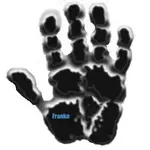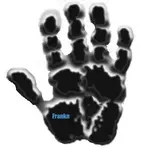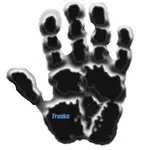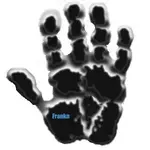Alexandre
Bronze Member
- #1
Thread Owner
An open letter from the ICOMOS Scientific Committee on Archaeological Heritage Management
(ICAHM) to Spike TV and the National Geographic Channel
ICAHM Protests Television Programs That Encourage Destruction of Archaeological Heritage
The ICOMOS International Scientific Committee on Archaeological Heritage Management (ICAHM) joins with the Society for American Archaeology (SAA), the Register of Professional Archaeologists (RPA), and other organizations that represent the concerns of professional archaeologists in expressing our dismay and deep concern at the airing of television programs that will encourage destruction of our common archaeological heritage. We call upon the two channels, Spike TV and the National Geographic Channel, to stop broadcasting these programs, which celebrate and in that way encourage looting artifacts from battlefields and historic sites.
Spike TV has scheduled a premier of the series “American Digger” on March 21, 2012. It is to be hosted by “former professional wrestler-turned modern day relic hunter” Ric Savage. They are to “scour target-rich areas, such as battlefields and historic sites, in hopes of striking it rich by unearthing and selling rare pieces of American history.” The mention of battlefields and historic sites is enormously alarming, because the exact locations at which artifacts are found are crucial to understanding what really transpired at such sites. Among the examples of how the use of archaeological protocols can greatly enrich our understanding of pivotal moments in history can be seen in Doug Scott’s work at the Little Bighorn Battlefield, which was used to rewrite the history of that battle.
When archaeologists encounter human remains they adhere strictly to laws and protocols that govern treatment of them. Finding human remains is not uncommon at battlefields; they are still being found at Gettysburg today. Disturbing these remains in the pursuit of profit would, we think, strike many as a form of desecration. Not all battlefields are within protected areas such as National Parks, and so the remains of soldiers might easily be encountered by treasure hunters. So might the remains of Native Americans, and most Native Americans would consider disturbance to be sacrilege. Archaeologists are bound by ethical standards and aware of laws that ensure respectful treatment of remains, while the same can not be said of treasure hunters.
The National Geographic Channel aired the first of two pilots for a treasure hunting series of their own, “Diggers,” on February 28, 2012. The President of the Society for American Archaeology, Prof. Fred Limp, had written to National Geographic beforehand expressing concern that the program might encourage treasure hunting at historic sites. Unabashed, the National Geographic Executive Vice President for Communications expressed surprise in a letter to Prof. Limp that “an organization such as yours, with whom we’ve had a long constructive relationship, as you yourself acknowledge, would assume the worst about a project with which we are involved without anyone actually having seen it.” Surely, however, there was ample cause for great concern before the program was aired. The title of the National Geographic show is suspiciously similar to that of the Spike TV program, which clearly glorifies looting of battlefields and historic sites.
Further, the promotional material echoes the same unrealistic promise of wealth gained from the sale of excavated historic objects: ATC's [Anaconda Treasure.com] awesome and bizarre metal detecting videos, designed as much for entertainment as for learning. You can't stop the insanity. You can only hope to contain it. Now you can catch KG and Ringy on the new treasure hunting show DIGGERS, premiering on the National Geographic Channel Feb 28, 2012 with back to back episodes of crazed searches for gold, silver, coins, relics, and other delicious, lick-worthy pockets of nectar in the trademark tradition and style of Team ATC….Watch KG, Ringy, & Team ATC dig targets and lick coins and things.
In light of the unreceptive response from National Geographic to Prof. Limp’s very diplomatically worded letter, ICAHM assembled a small group to watch the November 28 showing of “Diggers.” What the groups saw was as disturbing as the promotional material suggested that it might be. Metal detectors were used to scour both battlefields and historic sites. No attempt was made to record what was found and where. Instead, KG and Ringy wagered among themselves as to which would realize the most profit from what was found at the various sites visited. Cartridge casings were worth about a dollar, a 1943 penny fetched the unexpectedly high price of $40 because the date held some special significance for an antique shop owner, and so on. When totals were tallied, the loser was compelled to undergo some form of degradation. In one case, this was riding a bike while wearing a dress into a cold lake, in another, licking a jellyfish.
At the end of the program, a brief disclaimer flashed across the screen advising viewers that collecting artifacts was subject to a variety of laws. And indeed it is. A variety of local, state, and federal laws are in place that typically forbid metal detecting on public lands unless done under the supervision of an archaeologist. Where private lands are concerned, applicable laws would include those regarding trespass and theft. Such laws are difficult to enforce, however, and already are commonly ignored. Ironically, rampant looting of archaeological and historic sites more than 100 years ago lead to the first federal law that provided the basis of the regulating these activities, the Antiquities Act of 1906. Encouraging looting through popular culture media constitutes a step backwards.
ICAHM has begun preliminary inquiries into the industry that produces documentaries. Given the hundreds of television channels available to the viewer, there is intense competition among them for viewership. Thus the popularity of a program on one channel, for example the Discovery Channel, spawns similar shows on all the others, such at National Geographic Channel and the History Channel. Examples in the past include spates of shows that showcased dangerous occupations and exceptionally large game, and emerging trends are programs about survivalists. The target demographic for television documentaries has evolved to be young men from about 18 to 35 years of age. Unfortunately, this is a demographic that might not merely watch programs about treasure hunting, but actually engage in this activity. If looting programs on Spike TV and the National Geographic channel prove to be popular, is it not unlikely that we will see more of them on other channels, establishing a real fad for looting.
One can only assume that archaeologists affiliated with National Geographic had no influence over programming decisions by the National Geographic Channel. We encourage National Geographic, which has adopted the tag line “inspiring people to care about the planet since 1888,” not to squander the respect and so the influence that they have carefully built over many years for short term gain, but instead to use it as they have in the past to help preserve the natural and cultural heritage of the world. We ask not only that National Geographic abandon plans to broadcast future “Diggers,” but that they draw upon the expertise of the archaeologists and scientists on their staff when making programming decisions in the future.
ICAHM encourages you to participate in the protest by going to the sites accessible through the following links and signing the petitions there:
http://www.change.org/petitions/nat...iccom-stop-airing-the-television-show-diggers
http://www.change.org/petitions/stop-spike-tv-from-looting-our-collective-past
Douglas C. Comer, Ph.D., RPA
Prof. Dr. Willem J.H. Willems
Co-Presidents, ICAHM
(ICAHM) to Spike TV and the National Geographic Channel
ICAHM Protests Television Programs That Encourage Destruction of Archaeological Heritage
The ICOMOS International Scientific Committee on Archaeological Heritage Management (ICAHM) joins with the Society for American Archaeology (SAA), the Register of Professional Archaeologists (RPA), and other organizations that represent the concerns of professional archaeologists in expressing our dismay and deep concern at the airing of television programs that will encourage destruction of our common archaeological heritage. We call upon the two channels, Spike TV and the National Geographic Channel, to stop broadcasting these programs, which celebrate and in that way encourage looting artifacts from battlefields and historic sites.
Spike TV has scheduled a premier of the series “American Digger” on March 21, 2012. It is to be hosted by “former professional wrestler-turned modern day relic hunter” Ric Savage. They are to “scour target-rich areas, such as battlefields and historic sites, in hopes of striking it rich by unearthing and selling rare pieces of American history.” The mention of battlefields and historic sites is enormously alarming, because the exact locations at which artifacts are found are crucial to understanding what really transpired at such sites. Among the examples of how the use of archaeological protocols can greatly enrich our understanding of pivotal moments in history can be seen in Doug Scott’s work at the Little Bighorn Battlefield, which was used to rewrite the history of that battle.
When archaeologists encounter human remains they adhere strictly to laws and protocols that govern treatment of them. Finding human remains is not uncommon at battlefields; they are still being found at Gettysburg today. Disturbing these remains in the pursuit of profit would, we think, strike many as a form of desecration. Not all battlefields are within protected areas such as National Parks, and so the remains of soldiers might easily be encountered by treasure hunters. So might the remains of Native Americans, and most Native Americans would consider disturbance to be sacrilege. Archaeologists are bound by ethical standards and aware of laws that ensure respectful treatment of remains, while the same can not be said of treasure hunters.
The National Geographic Channel aired the first of two pilots for a treasure hunting series of their own, “Diggers,” on February 28, 2012. The President of the Society for American Archaeology, Prof. Fred Limp, had written to National Geographic beforehand expressing concern that the program might encourage treasure hunting at historic sites. Unabashed, the National Geographic Executive Vice President for Communications expressed surprise in a letter to Prof. Limp that “an organization such as yours, with whom we’ve had a long constructive relationship, as you yourself acknowledge, would assume the worst about a project with which we are involved without anyone actually having seen it.” Surely, however, there was ample cause for great concern before the program was aired. The title of the National Geographic show is suspiciously similar to that of the Spike TV program, which clearly glorifies looting of battlefields and historic sites.
Further, the promotional material echoes the same unrealistic promise of wealth gained from the sale of excavated historic objects: ATC's [Anaconda Treasure.com] awesome and bizarre metal detecting videos, designed as much for entertainment as for learning. You can't stop the insanity. You can only hope to contain it. Now you can catch KG and Ringy on the new treasure hunting show DIGGERS, premiering on the National Geographic Channel Feb 28, 2012 with back to back episodes of crazed searches for gold, silver, coins, relics, and other delicious, lick-worthy pockets of nectar in the trademark tradition and style of Team ATC….Watch KG, Ringy, & Team ATC dig targets and lick coins and things.
In light of the unreceptive response from National Geographic to Prof. Limp’s very diplomatically worded letter, ICAHM assembled a small group to watch the November 28 showing of “Diggers.” What the groups saw was as disturbing as the promotional material suggested that it might be. Metal detectors were used to scour both battlefields and historic sites. No attempt was made to record what was found and where. Instead, KG and Ringy wagered among themselves as to which would realize the most profit from what was found at the various sites visited. Cartridge casings were worth about a dollar, a 1943 penny fetched the unexpectedly high price of $40 because the date held some special significance for an antique shop owner, and so on. When totals were tallied, the loser was compelled to undergo some form of degradation. In one case, this was riding a bike while wearing a dress into a cold lake, in another, licking a jellyfish.
At the end of the program, a brief disclaimer flashed across the screen advising viewers that collecting artifacts was subject to a variety of laws. And indeed it is. A variety of local, state, and federal laws are in place that typically forbid metal detecting on public lands unless done under the supervision of an archaeologist. Where private lands are concerned, applicable laws would include those regarding trespass and theft. Such laws are difficult to enforce, however, and already are commonly ignored. Ironically, rampant looting of archaeological and historic sites more than 100 years ago lead to the first federal law that provided the basis of the regulating these activities, the Antiquities Act of 1906. Encouraging looting through popular culture media constitutes a step backwards.
ICAHM has begun preliminary inquiries into the industry that produces documentaries. Given the hundreds of television channels available to the viewer, there is intense competition among them for viewership. Thus the popularity of a program on one channel, for example the Discovery Channel, spawns similar shows on all the others, such at National Geographic Channel and the History Channel. Examples in the past include spates of shows that showcased dangerous occupations and exceptionally large game, and emerging trends are programs about survivalists. The target demographic for television documentaries has evolved to be young men from about 18 to 35 years of age. Unfortunately, this is a demographic that might not merely watch programs about treasure hunting, but actually engage in this activity. If looting programs on Spike TV and the National Geographic channel prove to be popular, is it not unlikely that we will see more of them on other channels, establishing a real fad for looting.
One can only assume that archaeologists affiliated with National Geographic had no influence over programming decisions by the National Geographic Channel. We encourage National Geographic, which has adopted the tag line “inspiring people to care about the planet since 1888,” not to squander the respect and so the influence that they have carefully built over many years for short term gain, but instead to use it as they have in the past to help preserve the natural and cultural heritage of the world. We ask not only that National Geographic abandon plans to broadcast future “Diggers,” but that they draw upon the expertise of the archaeologists and scientists on their staff when making programming decisions in the future.
ICAHM encourages you to participate in the protest by going to the sites accessible through the following links and signing the petitions there:
http://www.change.org/petitions/nat...iccom-stop-airing-the-television-show-diggers
http://www.change.org/petitions/stop-spike-tv-from-looting-our-collective-past
Douglas C. Comer, Ph.D., RPA
Prof. Dr. Willem J.H. Willems
Co-Presidents, ICAHM









